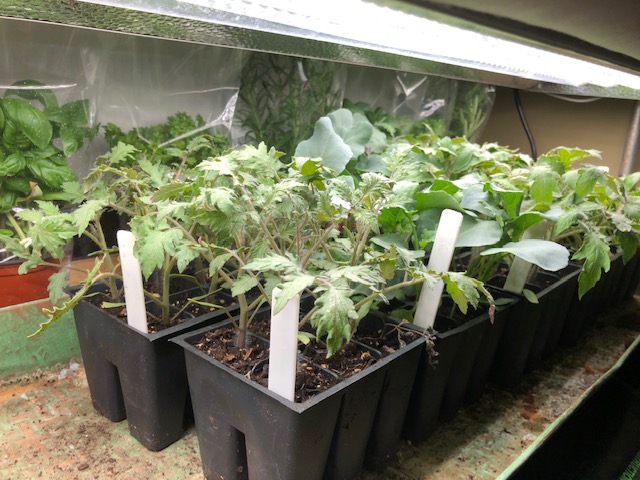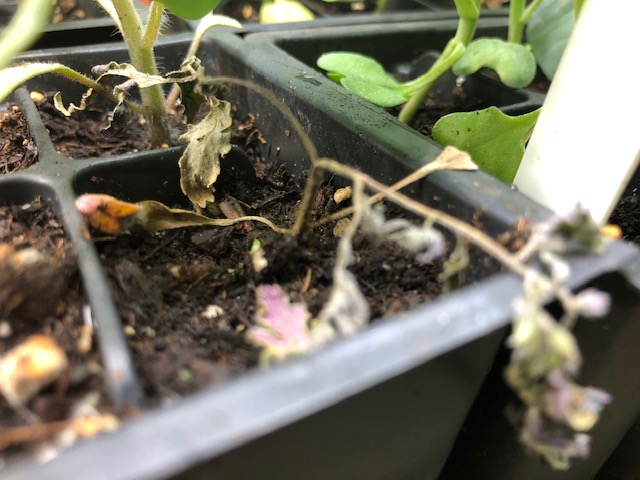This guest article was prepared by Master Gardener Christin Kaiser. Christin is a volunteer at the Wright Museum, lending her expertise to our working Victory Garden and various other projects.
The very first rule of gardening is: “Grow what you enjoy eating.” It’s silly to plant and tend rows of spinach if you don’t really like eating it – or the work of preparing it!
This current pandemic panic has bumped up the interest in growing fresh veggies across a wide and disparate population. Much like our parents or grandparents felt the need for food security during World War II, we too can enjoy that comfortable feeling of being “able to DO something!”
So you’ve never had a garden or only grow decorative plants for the yard…where do you start? Several places can provide you with basic instructions and support!
The County Extension Services “help desk” at UNH (answers@unh.edu) is great. Many magazines, from the classics like Organic Gardening, to Mother Earth News, Fine Gardening, as well as governmental brochures put out by the USDA are useful. Most land grant universities and major botanical institutions all have printed and online resources.
Johnny’s Seeds in Albion Maine, FEDCO, also in Maine, and Hudson Valley Seed Company in New York all offer their help both in catalogs and online.
Many seed companies are sold out or have trouble meeting the unexpected demand of recent weeks. However, nearby garden centers like Spiderweb in Tuftonboro, Gardener’s Supply of Vermont and Lebanon, NH all have seeds, as does Bradley’s Hardware in Wolfeboro; Tractor Supply Company, Ocean State Job Lots, and the Mountain Grainery in Ossipee; and big box stores in the area. Perhaps purchasing started seedlings will be an easier route to take for most people. Even though I start many of my own plants for home and the Wright Museum’s victory Garden, I still buy things that are more common or too fussy to deal with, like common marigolds and fussy celery. As we have a section in the Victory Garden devoted to Japanese vegetables grown in WWII internment camps, I also buy these and start them myself.

Some things you might only need or want one or two plants of (Zucchini!), so it may make more sense to buy the single plant and not have a packet of seeds go to waste, or take the time to store the left over seeds carefully to remain viable. Yes, a single plant costs about what a pack of 25 or more seeds costs…but the time, space, and care that you’ll expend growing your own often offsets that extra cost.
To start your own seeds, you’ll need a minimum of a 2’x4’ space that can be fitted with an adjustable (in height off the plants) shop light. Using one warm and one cool bulb will give you close to the correct wave length for plant growth. If you can purchase “Gro Bulbs,” that will be even better. These are tuned to the plants’ exact needs to grow foliage and support basic flowering.
A heat mat under your seed trays also makes a huge difference in germination rate. But, I lived without one for decades, and commercial greenhouses have basic ambient air heat rather than bottom heat, so don’t panic if you don’t get one. A way to keep the seedlings moist without risking rotting and stem damping off would be a plastic sheet to drape over the area. Always water from the bottom to avoid fungal “damp-off” problems. Many seed trays come with a clear dome top to get the tiny seeds to germinate, but these are quickly out grown, so an alternative will be needed.

Part two [coming soon] will cover the actual process of starting common vegetables and transplanting them, and a list of planting techniques, dates and harvesting methods, more resource listings, and recipes.
Happy Growing!
– Christin




